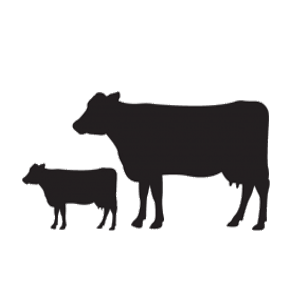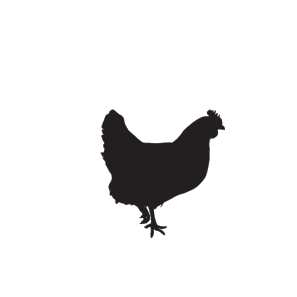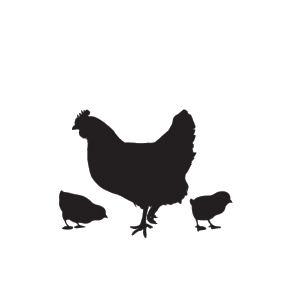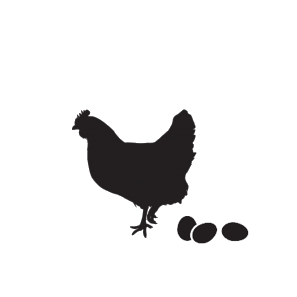by Dean Backhouse
– Innovation and Research Manager, Epol
Introduction
Gut health is a key factor of poultry performance, influencing nutrient absorption and immunity. Biomarkers, naturally occurring biological molecules found in body fluids or tissues, are measurable indicators of physiological or pathological processes and provide valuable insights into gut function. Understanding and monitoring these markers is essential for optimizing poultry production and ensuring animal welfare. The application of biomarkers will aid in developing strategies to promote a healthy gut, reduce reliance on antibiotics, and improve the sustainability of poultry production.
Intestinal health in poultry production
Preserving intestinal health is a key issue in enhancing poultry productivity, reducing antimicrobial usage and improving bird welfare (Van Immerseel & De Gussem, 2024).
Key components of gastrointestinal functionality are diet, effective structure and function of the gastrointestinal barrier, host interaction with the gastrointestinal microbiota, effective digestion and absorption of feed, effective immune status, and neuroendocrine function of the gut (Pietro et al., 2019). Exposure to common gut pathogens, diseases, mycotoxins, antinutritional factors present in feed ingredients, unsanitary water, environmental stressors, and the appetite of modern chickens for nutrient rich diets predispose these birds to bacterial dysbiosis (an imbalance in the type and number of gut bacteria) and intestinal health issues (Salahi et al., 2025). Furthermore, the ban on growth promoting antimicrobials in animal feed in some countries has led to dysbiosis-related problems becoming a major issue in poultry production (Ducatelle et al., 2018).
Poor intestinal health may result in subclinical conditions in which growth and feed conversion are adversely affected, or pathological conditions in which there is upregulation of inflammation in the intestinal mucosa, leakage of body fluids into the intestinal lumen and passage of intestinal content, including bacteria, from the intestinal lumen into blood vessels and into host tissues and organs (Ducatelle et al., 2023) where they can cause further health complications such as bacterial chondronecrosis with osteomyelitis and lameness (Wideman, R.F., 2016).
Traditional measures of poultry gut health
A sure sign that a flock is facing an intestinal health issue is the observation of atypical droppings. In birds with intestinal health challenges, droppings lose their shape and the characteristic uric acid white “cap” and may contain undigested feed visible to the naked eye (a symptom referred to as feed passage). The droppings may also be watery and may have a yellow or orange colour.
At necropsy, the gastrointestinal tract can be studied for abnormalities, such as lesions in the gizzard and intestine, inflammation of the intestine, a thin, transparent and fragile intestinal wall, orange mucus, and watery, foamy intestinal content. Histological analysis of intestinal tissue and the morphology of the intestinal villi can also be performed. Villi are tiny, finger-like projections that line the interior (lumen) of the small intestine. The primary function of villi is to absorb nutrients from food and transfer them into the bloodstream. Shortened villi, deeper crypts and reduced villi surface area result in impaired nutrient absorption and are often observed in poultry with compromised enteric health. While being robust, histology has limitations in that it is invasive, often requiring animals to be sacrificed in order to obtain samples and provides information on tissue structure at a specific location, which may not be representative of the entire intestine.
Unfortunately, there is no simple laboratory test to determine optimal gastrointestinal functionality or to diagnose dysbiosis. Dysbiosis itself is relatively ill-defined and even at post-mortem examination, diagnosis is not straightforward. Furthermore, gut health challenges may be subclinical, in which performance may be suppressed without clear symptoms, and diagnoses of gut related health issues are usually made too late in the disease process. There is a growing body of research exploring the possibility to use biomarkers for early warning of potential dysbiosis and the identification of flocks that have sub optimal gut functionality, allowing timely, strategic interventions (Ducatelle et al., 2023).
Biomarkers
Biomarkers are naturally occurring biological molecules found in body fluids like blood, body secretions, or tissues that are measurable indicators of a physiological or pathological process or condition. Markers currently in use to evaluate poultry gut health include digestive enzyme activities, short chain fatty acids, quantitative and qualitative measures of the gut microbial community and the presence of virulence genes, immunological and physiological indicators, and metagenomics.
Digestive enzyme activity
Enzymes like protease, amylase and lipase, play a crucial role in nutrient digestion and absorption. Digestive enzymes are critical in achieving a healthy gut microbiome, particularly through minimising the availability of undigested protein to the microbiota that reside in the caeca, and through optimizing fermentable fibre supply such that fermentation patterns benefit intestinal tract integrity and functionality (Bedford & Apajahlati, 2021). Reduced enzyme activity, measured by spectrophotometry, in the intestinal lumen or at the intestinal mucosa (the innermost lining of the digestive tract) can result from intestinal damage or inflammation, leading to maldigestion and malabsorption. While enzyme activity assays provide a snapshot of enzyme function, they do not necessarily reflect overall digestive efficiency and enzyme activities vary depending on the age of the bird, diet composition and the segment of the intestine, making interpretation of results difficult.
Short-chain fatty acids
Short-Chain Fatty Acids (SCFAs) such as acetate, propionate, and butyrate, are produced by bacterial fermentation of dietary fibre and play a crucial role in gut health. SCFAs are a major energy source for colonocytes, regulate intestinal motility, and have anti-inflammatory effects. Of all the short-chain fatty acids, butyrate is particularly important as an energy source for intestinal epithelial cells and for maintaining gut barrier function to such an extent that exogenous butyrate is now available as a feed additive for poultry. Gas chromatography and high performance liquid chromatography methods can be used to quantify SCFA concentrations in caecal contents, reflecting the fermentation activity of the gut microbiota. Unfortunately, such methods require extensive sample preparation and specialized equipment.
16S rRNA sequencing
The advent of gene sequencing technology has allowed the study of the composition of the intestinal microbial community, which is often referred to as the gut microbiome. One of the most widely used techniques to identify and compare bacterial diversity of the gut microbiome is 16S rRNA gene amplicon sequencing. The 16S rRNA gene, present in all bacteria, contains variable regions that can be used to distinguish between different bacterial species. This method enables the identification and classification of bacterial species providing insights into microbial diversity and abundance. A characteristic pattern of the intestinal microbiota that appears to be associated with poor intestinal health in both animals and humans is loss of species richness, diversity and evenness (Ducatelle et al., 2018). For example, reduced diversity of faecal microbiota is typical in patients with Chron’s disease (Manichanh et al., 2006). Healthy poultry typically exhibit a diverse microbiota. Diversity is often quantified using metrics like the Shannon diversity index (higher values indicate greater diversity) and Chao1 richness (estimates the number of unique species). While it is useful, 16S rRNA sequencing offers a limited resolution for distinguishing between closely related species and has other shortfalls, such as a risk of overestimating diversity (Sun et al., 2013). Furthermore, public databases containing hundreds of thousands of sequenced microbiota samples provide limited opportunities for a holistic view of intestinal health as they most often relate to individual, specific studies in which only specific control and treatment groups were analysed. A decrease in the cost of other techniques such as shotgun metagenomics and the increase in availability of metabolomic analysis will provide new opportunities to overcome some of the restrictions of 16S amplicon methodology shortfalls (Stanley et al., 2024).
High throughput qPCR analysis
Quantitative PCR (qPCR) has been used for years for the quantification of bacteria. However, this method requires the development of specific primers and has historically had a low throughput. The constraint of low throughput has recently been overcome by the development of high-throughput qPCR (HT-qPCR), which allows for the simultaneous detection of the most prevalent bacteria in systems of moderate complexity (Dreier et al., 2022). High throughput qPCR offers a great opportunity to study specific genes of interest, particularly identifying the impact of the prevalence and abundance of microbial virulence genes, thereby allowing for a greater understanding of the factors influencing pathogenicity and possible coinfections by detecting, quantifying and correlating pathogen markers and virulence genes to health status, season, geography, or other environmental variables of interest. For example, a microbial surveillance tool developed using the HT-qPCR technique was used to investigate the relationship between pathogens and broiler chicken skin pigmentation (adversely affected by poor utilisation of dietary carotenoids) in an area of Central America in which skin pigmentation was highly variable, causing economic impact to poultry producers (Levya-Jiminez et al., 2024).
Immunological markers
Gut-associated lymphoid tissue (GALT) is a key immunological system estimated to comprise more immune cells than any other tissue and plays a major role in initiating and mediating immune function (Kasahara et al., 1993). Intestinal immunoglobulins play a crucial role in mucosal immunity. For example, IgA prevents pathogens from adhering to the intestinal epithelium and neutralizes toxins. Low IgA levels can increase the risk of enteric infection. Enzyme-linked immunosorbent assay (ELISA) methodology can be used to quantify IgA levels in intestinal contents or mucosa, reflecting the mucosal immune response, and immunohistochemistry techniques allow for visualization and localization of IgA-producing cells in the intestinal mucosa. Unfortunately, ELISA is not without its drawbacks. IgA levels vary depending on age, breed, and immune status, and ELISA results can be influenced by the specificity of the antibodies used. Immunohistochemistry is semi-quantitative and not definitive.
Cytokines are signalling molecules that regulate immune responses. Pro-inflammatory cytokines such as interleukin-1 (IL-1), IL-6, IL-8, and tumour necrosis factor-alpha (TNF-α) promote inflammation to combat pathogens, while anti-inflammatory cytokines (e.g., IL-10) help to resolve inflammation and maintain homeostasis (Xu et al., 2019). An imbalance in cytokine production is associated with chronic intestinal inflammation and diseases like necrotic enteritis. Cytokine levels are typically low in healthy birds and increase during infection or inflammation. ELISA is used to quantify cytokine levels in intestinal mucosa or serum, reflecting the inflammatory status of the gut, and qPCR can be used to measure cytokine gene expression, providing insights into the transcriptional regulation of immune responses. Unfortunately, cytokine levels can fluctuate rapidly and measuring them at a single point in time may not fully reflect the immune status.
Physiological indicators
Intestinal barrier function is essential for preventing the translocation of harmful substances from the gut lumen into the bloodstream. A compromised gut barrier can lead to “leaky gut,” allowing pathogens and toxins to enter the circulation and cause systemic inflammation. The breakdown of “tight junctions” between intestinal epithelial cells and increased intestinal permeability is a feature of many enteric diseases in poultry. Intestinal barrier function can be measured by transepithelial electrical resistance (TEER), the electrical resistance across the intestinal epithelium, or by permeability assays, using markers such as lactulose and mannitol, assessing the passage of these molecules across the intestinal barrier (Awad et al., 2017). Lactulose, a large molecule, should be retained, while mannitol, a small molecule, should pass through. A high lactulose to mannitol ratio indicates a leaky gut. Through the use of qPCR and immunohistochemistry, tight junction protein expression can be measured to assess the expression and localization of tight junction proteins, such as occludin and claudins. TEER measurements can be technically challenging, and permeability assays can be influenced by factors other than tight junction integrity.
Metagenomics, proteomics and metabolomics
Metagenomics, proteomics and metabolomics approaches provide a comprehensive view of the microbial community, including functional genes and metabolic pathways, identifying the metabolic potential of the gut microbiota and offering deeper insights into the role of the microbiota in gut health. Changes in gene expression, metabolic pathways, or the identification of abnormal pathways, can be linked to disease states or altered nutrient utilization. Metagenomics, proteomics and metabolomics are exciting avenues of research, particularly due to the development of machine learning which can be utilized to analyse large datasets generated from gut health marker analysis to identify patterns and predict gut health outcomes. However, these techniques are expensive and computationally intensive.
Future directions
Non-invasive methods for assessing gut health would be highly beneficial for reducing stress on birds and facilitating routine monitoring. Some promising new approaches have been identified such as measuring host proteins and intestinal content in faeces via lateral flow assays, enabling the use of “dip sticks” for rapid analysis on farm. Two promising biomarkers for measurement in fresh faeces are ovotransferrin as an indicator of gut leakage (Goosens et al., 2018) and calprotectin as an indicator of intestinal inflammation (Canani et al., 2008). Identifying novel gut health markers, such as metabolomics and proteomics profiles, could provide a more comprehensive understanding of the complex interactions within the gut ecosystem. Conducting longitudinal studies to monitor gut health markers over time, such as determining a typical gut microbiome for a particular broiler chicken farm over multiple cycles, can provide valuable insights into the dynamics of gut health and the long-term effects of dietary and management practices.
Conclusion
Further research is needed to elucidate the complex interactions between gut microbiota, immune function, and intestinal barrier function, and how these interactions influence poultry health and performance. Development of non-invasive, rapid techniques to measure gut health biomarkers and developing precision nutrition strategies based on gut health status, as determined by these markers, could optimize nutrient utilization and improve overall gut health.
References
Awad, W.A., Hess, C. and Hess, M. (2017) Enteric pathogens and their toxin-induced disruption of the intestinal barrier through alteration of tight junctions in chickens. Toxins 60.
Bedford, M.R. and Apajalahti, J.H. (2021) The role of feed enzymes in maintaining poultry intestinal health. Journal of the Science of Food and Agriculture 102 (5): 1759-1770.
Canani, R.B., Terrin, G., Rapacciulo, L., Miele, E., Siani, M.C., Puzone, C., Cosenza, L., Staiano, A. and Troncone, R. (2008) Faecal calprotectin as reliable non-invasive marker to assess the severity of mucosal inflammation in children with inflammatory bowel disease. Digestive and liver disease 40: 547-553.
Dreier, M., Meola, M., Berthoud, H., Shani, N., Wechsler, D. and Junier, P. (2022) High-throughput qPCR and 16S rRNA gene amplicon sequencing as complementary methods for the investigation of the cheese microbiota. BMC Microbiology 22: 48.
Ducatelle, R., Goossens, E., De Meyer, F., Eeckhaut, V., Antonissen, G., Haesebrouck, F. and Van Immerseel, F. (2018) Biomarkers for monitoring intestinal health in poultry: present status and future perspectives. Veterinary Research 49: 43.
Ducatelle, R., Goossens, E., Eeckhaut, V. and Van Immerseel, F. (2023) Biomarkers for intestinal health, in: Pre and Probiotics for Poultry Gut Health, pp. 190-196. CABI.
Goosens, E., Debyser, G., Callens, C., De Gussem, M., Dedeurwaerder, A., Devreese, B., Haesbrouck, F., Flügel, M., Pelzer, S., Thiemann, F., Ducatelle, R. and Van Immerseel, F. (2018) Elevated faecal ovotransferrin concentrations are indicative for intestinal barrier failure in broiler chickens. Veterinary Research 49: 51.
Kasahara Y., Chen, C.L., Gobel, T.W.F., Bucy, R.P. and Cooper, M.D. (1993) Intraepithelial lymphocytes in birds. In: Kiyono H, and McGhee JR, editors. Mucosa Immunology: Intraepithelial Lymphocytes. New York, NY: Raven Press, pp. 163–74.
Levya-Jiminez, H., Galbraith, E.A., Delago, F., Doden, H.L., Soto, C. and Dirks, B. (2024) PathKinexTM, a DNA-based microbial surveillance platform can provide insights on bacterial interactions leading to coinfections in broiler chickens. . Proceedings of the 8th International Conference on Poultry Intestinal Health, Mantinlupa, Philippines.
Manichanh C., Rigottier-Gois, L., Bonnaud, E., Gloux, K., Pelletier, E., Frangeul, L., Nalin, R., Jarrin, C., Chardon, P., Marteau P., Roca, J. and Dore, J. (2006) Reduced diversity of faecal microbiota in Crohn’s disease revealed by a metagenomic approach. Gut 55: 205–21.
Pietro, C., Verlhac, V., Pérez, C.E., Schmeisser, J. and Kluenter, A. (2019) Biomarkers of gastrointestinal functionality in animal nutrition and health. Animal Feed Science and Technology 250: 9-31.
Salahi, A., Abd El-Ghany, W.A., Attia, Y.A., Zabermawi, N.M., Bovera, F. and Tufarelli, V. (2025) Gut dysbiosis: nutritional causes and risk prevention in poultry, with reference to other animals. South African Journal of Animal Science 55: 32.
Stanley, D., Bajagai, Y., Kluenemann, M. and Yacoubi, N. (2024) Chicken microbial composition and functionalities, in relation to gut health. Proceedings of the 8th International Conference on Poultry Intestinal Health, Mantinlupa, Philippines.
Sun, D., Jiang, X., Oinglong, L.W., Ning-Yi, Z. (2013) Intragenomic Heterogeneity of 16S rRNA genes causes overestimation of prokaryotic diversity. Applied and Environmental Microbiology 79.
Van Immerseel, F. and De Gussem, M. (2024) Opening Remarks. Proceedings of the 8th International Conference on Poultry Intestinal Health, Mantinlupa, Philippines.
Wideman, R.F. Jr. (2016) Bacterial chondronecrosis with osteomyelitis and lameness in broilers: a review. Poultry Science 95: 325-344.
Xu, Z.Y., Yu, Y., Liu, Y., Ou, C.B., Zhang, C.B., Liu, T.Y., Wang, Q.X. and Ma, J.Y. (2019) Differential expression of pro-inflammatory and anti-inflammatory genes of layer chicken bursa after experimental infection with infectious bursal disease virus. Poultry Science, 98: 5307-5314.
Eager to become an Expert yourself, contact your nearest technical advisor and let the experience begin!














